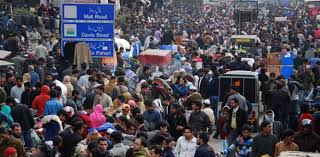Pakistan has been identified as the 27th fastest-growing population in the world, with a current population of 241.5 million and an annual growth rate of 2.55%. The recent 7th Population Census provides several insights into the country’s demographic landscape.
One of the key findings is that a significant portion of Pakistan’s population is very young, with 79% of people being under the age of 40. This youthful demographic presents both opportunities and challenges for the nation’s future.
Federal Minister for Planning, Ahsan Iqbal, emphasized some of the major issues facing the country. A high illiteracy rate, currently at 39.5%, is one of the most pressing problems. Additionally, there is a considerable number of children who are not attending school, making up 36% of the population. These figures highlight the urgent need for improvements in the education sector.
The census also revealed some discrepancies in the reported population figures for Karachi, Pakistan’s largest city. Moreover, there was a slight decrease in the percentage of the population identifying as Muslim.
The overall literacy rate in Pakistan stands at 60.5%, but there are noticeable differences between genders, with men generally having higher literacy rates than women. This disparity further underscores the need for targeted educational policies.
The results of the census make it clear that Pakistan must focus on developing better educational and economic strategies. Addressing the high rates of illiteracy and out-of-school children, as well as improving gender equality in education, are crucial steps toward ensuring a brighter future for the country’s growing population.


